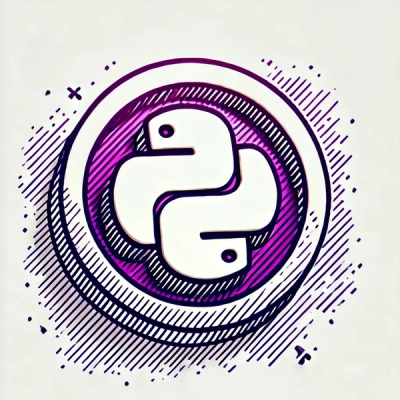
Security News
PEP 810 Proposes Explicit Lazy Imports for Python 3.15
An opt-in lazy import keyword aims to speed up Python startups, especially CLIs, without the ecosystem-wide risks that sank PEP 690.
github.com/snowflakedb/gosnowflake
For official support and urgent, production-impacting issues, please contact Snowflake Support.

This topic provides instructions for installing, running, and modifying the Go Snowflake Driver. The driver supports Go's database/sql package.
The following software packages are required to use the Go Snowflake Driver.
The latest driver requires the Go language 1.23 or higher. The supported operating systems are 64-bits Linux, Mac OS, and Windows, but you may run the driver on other platforms if the Go language works correctly on those platforms.
If you don't have a project initialized, set it up.
go mod init example.com/snowflake
Get Gosnowflake source code, if not installed.
go get -u github.com/snowflakedb/gosnowflake
For detailed documentation and basic usage examples, please see the documentation at godoc.org.
This driver currently does not support GCP regional endpoints. Please ensure that any workloads using through this driver do not require support for regional endpoints on GCP. If you have questions about this, please contact Snowflake Support.
Snowflake provides a set of sample programs to test with. Set the environment variable $GOPATH to the top directory of your workspace, e.g., ~/go and make certain to
include $GOPATH/bin in the environment variable $PATH. Run the make command to build all sample programs.
make install
In the following example, the program select1.go is built and installed in $GOPATH/bin and can be run from the command line:
SNOWFLAKE_TEST_ACCOUNT=<your_account> \
SNOWFLAKE_TEST_USER=<your_user> \
SNOWFLAKE_TEST_PASSWORD=<your_password> \
select1
Congrats! You have successfully run SELECT 1 with Snowflake DB!
The developer notes are hosted with the source code on GitHub.
Set the Snowflake connection info in parameters.json:
{
"testconnection": {
"SNOWFLAKE_TEST_USER": "<your_user>",
"SNOWFLAKE_TEST_PASSWORD": "<your_password>",
"SNOWFLAKE_TEST_ACCOUNT": "<your_account>",
"SNOWFLAKE_TEST_WAREHOUSE": "<your_warehouse>",
"SNOWFLAKE_TEST_DATABASE": "<your_database>",
"SNOWFLAKE_TEST_SCHEMA": "<your_schema>",
"SNOWFLAKE_TEST_ROLE": "<your_role>",
"SNOWFLAKE_TEST_DEBUG": "false"
}
}
Install jq so that the parameters can get parsed correctly, and run make test in your Go development environment:
make test
This is for debugging Large SQL statements (greater than 300 characters). If you want to enable debug mode, set SNOWFLAKE_TEST_DEBUG to true in parameters.json, or export it in your shell instance.
If you would like to ensure that certain tags are always present in the logs, RegisterClientLogContextHook can be used in your init function. See example below.
import "github.com/snowflakedb/gosnowflake"
func init() {
// each time the logger is used, the logs will contain a REQUEST_ID field with requestID the value extracted
// from the context
gosnowflake.RegisterClientLogContextHook("REQUEST_ID", func(ctx context.Context) interface{} {
return requestIdFromContext(ctx)
})
}
If you want to change the log level, SetLogLevel can be used in your init function like this:
import "github.com/snowflakedb/gosnowflake"
func init() {
// The following line changes the log level to debug
_ = gosnowflake.GetLogger().SetLogLevel("debug")
}
The following is a list of options you can pass in to set the level from least to most verbose:
"OFF""error""warn""print""trace""debug""info"Configure your testing environment as described above and run make cov. The coverage percentage will be printed on the console when the testing completes.
make cov
For more detailed analysis, results are printed to coverage.txt in the project directory.
To read the coverage report, run:
go tool cover -html=coverage.txt
You may use your preferred editor to edit the driver code. Make certain to run make fmt lint before submitting any pull request to Snowflake. This command formats your source code according to the standard Go style and detects any coding style issues.
dbus-daemon processes on certain OSThis only affects certain Linux distributions, one of them is confirmed to be RHEL. Due to a bug in one of the dependencies (keyring),
on the affected OS, each invocation of a program depending on gosnowflake (or any other program depending on the same keyring),
will generate a new instance of dbus-daemon fork which can, due to not being cleaned up, eventually fill the fd limits.
Until we replace the offending dependency with one which doesn't have the bug, a workaround needs to be applied, which can be:
DBUS_SESSION_BUS_ADDRESS=$XDG_RUNTIME_DIR/bus (if that socket exists, or create it) or even DBUS_SESSION_BUS_ADDRESS=/dev/nullDetails in issue 773
FAQs
Unknown package
Did you know?

Socket for GitHub automatically highlights issues in each pull request and monitors the health of all your open source dependencies. Discover the contents of your packages and block harmful activity before you install or update your dependencies.

Security News
An opt-in lazy import keyword aims to speed up Python startups, especially CLIs, without the ecosystem-wide risks that sank PEP 690.

Security News
Socket CEO Feross Aboukhadijeh discusses the recent npm supply chain attacks on PodRocket, covering novel attack vectors and how developers can protect themselves.

Security News
Maintainers back GitHub’s npm security overhaul but raise concerns about CI/CD workflows, enterprise support, and token management.